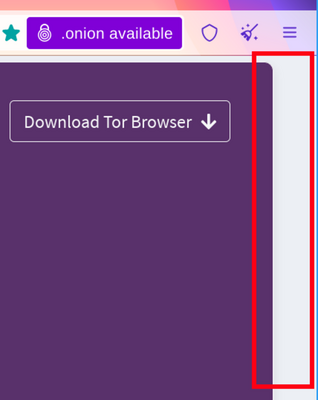Selaimen sormenjälkien ymmärtäminen
Selaimen yksilöinti tarkoittaa järjestelmällistä tiedonkeruuta selaimesta sen yksilöimiseksi tai sen ominaisuuksien selvittämiseksi.
Selainten asetukset ja toiminnot muodostavat niiden yksilöllisen tunnisteen.
Useimmat selaimet luovat käyttäjille yksilölliset tunnisteet, joita voidaan seurata internetissä.
Tarkempia tietoja selaimen sormenjälkien ottamisesta on seuraavissa Tor-blogin artikkeleissa: Browser Fingerprinting: An Introduction and the Challenges Ahead ja Tor Browser: perintö yksityisen selausinnovaatioiden edistämisestä.
Miksi selaimen sormenjälkien ottaminen uhkaa verkkotilassa olevaa yksityisyyttä?
Ensinnäkään näiden tietojen keräämiseen ei tarvitse pyytää lupaa käyttäjältä.
Mikä tahansa selaimessa suoritettava komentosarja voi luoda laitteesta yksilöllisen tunnisteen jopa käyttäjän huomaamatta.
Toisekseen jos jokin selaimen yksilöllisen tunnisteen ominaisuus tai ominaisuuksien yhdistelmä on ainutlaatuinen, laite voidaan tunnistaa ja sitä voidaan seurata verkossa.
Tämä tarkoittaa sitä, että vaikka evästeet eivät olisikaan käytössä, laitetta voidaan seurata sen yksilöllisen tunnisteen avulla.
Kuinka Tor Browser lieventää sormenjälkien ottamista
Tor Browser on erityisesti suunniteltu minimoimaan jokaisen käyttäjän sormenjäljen ainutlaatuisuus eri mittareilla.
Vaikka on käytännössä mahdotonta tehdä kaikista Tor Browserin käyttäjistä identtisiä, tavoitteena on vähentää kunkin mittarin erotettavissa olevien "ämpärien" määrää.
Tämä lähestymistapa hankaloittaa yksittäisten käyttäjien tehokasta seurantaa.
Tietyt ominaisuudet, kuten käyttöjärjestelmä ja kieli, ovat toimintojen kannalta välttämättömiä, eikä niitä voi piilottaa tai salata täysin.
Sen sijaan Tor Browser rajoittaa näiden ominaisuuksien lajiketta erottuvuuden vähentämiseksi.
Se esimerkiksi rajoittaa kirjasinten luettelointia ja soveltaa merkkien varaa, standardoi näyttöjen ja ikkunoiden koot käyttämällä letterboxingia, ja rajoittaa pyydettyjen kielten valikoiman pieneen ennalta määritettyyn joukkoon.
Tor Browserin sormenjälkien ottamista estävän suojauksen päätavoite on tehdä huomattavasti haastavammaksi kerätä tarpeeksi tietoa käyttäjien yksilöimiseksi, mikä parantaa yksityisyyttä vaarantamatta tarvittavia toimintoja.
Tor Browserin sormenjälkien ottamisesto-ominaisuudet
Kirjelaatikointi
Näytön mittoihin perustuvan sormenjälkien oton estämiseksi Tor Browser käynnistyy sisältöikkunan, joka on pyöristetty 200 x 100 pikselin kerrannaiseksi.
Tässä strategiana on sijoittaa kaikki käyttäjät muutamaan ämpäriin, jotta heidän erottaminen on vaikeampaa.
Tämä toimii aina siihen asti, kunnes käyttäjä muuttaa selainikkunan kokoa (esimerkiksi suurentamalla sen tai siirtymällä koko näytön tilaan).
TorBrowser toimittaa myös näihin skenaarioihin sormenjälki-suojauksen, jota kutsutaan Letterboxingiksi, Mozillan kehittämäksi ja vuonna 2019 esitellyksi tekniikaksi.
Se toimii lisäämällä marginaaleja selainikkunaan niin, että ikkuna on mahdollisimman lähellä haluttua kokoa, kun käyttäjät ovat vielä parissa näytön kokoämpärissä, jotka estävät niiden erottamisen näytön mittojen avulla.
Lyhyesti sanottuna tässä tekniikassa luodaan käyttäjäryhmiä näytön koon perusteella, ja tämä vaikeuttaa käyttäjien yksilöintiä näytön koon perusteella, sillä useilla käyttäjillä on samankokoiset näytöt.

User-Agent and Operating System spoofing
The User-Agent string is a value websites can use to identify details about your browser, operating system (OS), CPU architecture, vendor, and version.
Since this information can reveal which OS or device a user is using, it has been a vector for browser fingerprinting, allowing websites or trackers to potentially single out users.
Tor Browser addresses this by spoofing the User-Agent. Users cannot choose a specific operating system or attempt to imitate every possible platform.
Instead, Tor Browser standardizes User-Agent values to reduce uniqueness and avoid creating a false sense of privacy:
- All Windows appear as Windows 10.
- All macOS appear as OS X 10.15.
- All Android as Android 10.
- All other systems like all Linux distributions (including Tails and Qubes), *BSD and other operating systems are grouped together and reported as "Linux running X11".
- All the other details (such as the architecture) are also normalized per-platform.
In this case, the fingerprint resistance strategy in Tor Browser is to protect real values of the User-Agent by spoofing, but also have a large enough user set.
User-Agent is sent to websites as an HTTP header, and it is available to JavaScript as navigator.userAgent.
Inconsistencies in these values can trigger anti-bot and anti-fraud systems into categorizing Tor users as a bot, and deny their requests, which in turn affects usability for Tor Browser users.
Some privacy tools or users suggest that making all users appear as Windows would offer the best cover.
However, perfectly spoofing across all browser contexts is not possible and active fingerprinting methods (using fonts, features, behavior, with or without JavaScript, etc.) can often be used to infer aspects of the hardware or operating system.
Tor Browser does not let users select which OS they appear to be.
This is intentional: any option to choose would only make users more unique and thus easier to fingerprint.
The small set of standardized options is key to keeping users blended together, maximizing privacy for everyone.
Muita sormenjälkiä estäviä ominaisuuksia
Letterboxingin lisäksi Tor Browser käyttää monia muita ominaisuuksia, jotka vähentävät selaimen sormenjälkiä ja suojaavat käyttäjien yksityisyyttä.
These features include Canvas image extraction blocking, NoScript integration, and first-party isolation.
Täydellisen listan ominaisuuksista löydät Tor Browserin suunnittelma ja toteutus -tiedostosta.